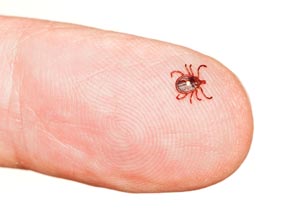MKSAP Quiz: 3-month history of fatigue, rash
A 58-year-old woman is evaluated for a 3-month history of fatigue and a nonpruritic rash on the chest and arms. The rash worsens with sun exposure. The patient reports no pleurisy, dryness of the eyes or mouth, arthritis, or Raynaud phenomenon.
On physical examination, vital signs are normal. On cutaneous examination, there are no other rashes, alopecia, or oral ulcers. There is no evidence of synovitis. The appearance of the rash is shown.

Laboratory studies, including metabolic panel, complete blood count, and urinalysis, are normal. Antinuclear antibody test results are negative, and anti-Ro/SSA antibody test results are positive.
Which of the following is the most likely diagnosis?
A. Livedo reticularis
B. Lyme disease
C. Subacute cutaneous lupus erythematosus
D. Systemic lupus erythematosus
Answer and critique
The correct answer is C: Subacute cutaneous lupus erythematosus. This question can be found in MKSAP 16 in the Rheumatology section, item 16.
This patient has subacute cutaneous lupus erythematosus (SCLE). The annular form of SCLE is characterized by scaly erythematous circular plaques with central hypopigmentation; the less common papulosquamous variant resembles psoriasis. These rashes most commonly involve the neck, trunk, and extensor surfaces of the arms. They can be chronic and recurrent but do not scar. SCLE may be associated with medications (hydrochlorothiazide, calcium channel blockers, ACE inhibitors, and terbinafine). SCLE occurs in up to 10% of patients with systemic lupus erythematosus (SLE), usually with some of the less serious SLE manifestations (arthritis, serositis), and is associated with anti-Ro/SSA and anti-La/SSB antibodies. This condition also manifests as its own entity; up to 50% of patients with SCLE do not develop systemic manifestations of lupus. This patient's findings of a rash with circular plaques on the chest and arms as well as elevated anti-Ro/SSA antibodies with no evidence of SLE manifestations such as serositis, arthritis, anemia, leukopenia, or kidney involvement are consistent with SCLE. The diagnosis of SCLE is based upon correlating the clinical lesions with the histopathologic findings on skin biopsy.
Livedo reticularis is a lacy, purple, mottling of the skin that frequently occurs in patients with cholesterol emboli syndrome, SLE, Raynaud phenomenon, the antiphospholipid syndrome, and other connective tissue disorders. This condition is caused by poor local cutaneous blood flow (leading to central pallor) with surrounding dilated or congested capillaries. Lesions are exacerbated by the cold or stress but often resolve with warming. Fixed livedo reticularis does not resolve and can be associated with vasculitis.
Erythema migrans, the hallmark manifestation of early Lyme disease, is an oval or circular erythematous rash that often has an inner ring of clearing, giving it the appearance of a “bull's eye.” The rash appears within several weeks after exposure and expands slowly over days. Erythema migrans occurs at the site of the tick bite, but patients with disseminated Lyme disease may have multiple lesions caused by hematogenous spread of the bacteria to other skin sites.
Other than SCLE rash, this patient has no other symptoms of SLE and therefore does not fulfill the diagnostic criteria for SLE.
Key Point
- Up to 50% of patients with subacute cutaneous lupus erythematosus do not develop systemic manifestations of lupus.





